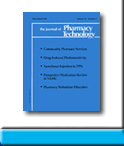 |
 |
Comparing Medication Adherence Methods
in
Lipid-Modifying Therapy
Janne LaFleur, Carrie McAdam-Marx, George L White,
Joseph L Lyon, and Gary M Oderda
To request full article click here.
Background: Investigators have employed a number of different methods to calculate adherence estimates for patients taking lipid-modifying therapy (LMT), including measures with different numerator and denominator options. Although at least one method is known to correlate well with cardiovascular outcomes, most have not been evaluated in outcomes studies.
Objectives: To evaluate different methods for measuring adherence, using LMT as a case example, and to determine whether estimates for adherence differ statistically and/or whether different methods can lead to different conclusions about patient adherence.
Methods: Adherence ratios were calculated using 8 different methods for 12,448 patients who were in a managed-care system and were considered new starts with statin therapy. The calculated measures were compared and tested for differences. Patients were categorized as <italic>adherent</italic> by each method, using a threshold of 0.8, and the proportions of patients categorized as adherent were compared for differences between adherence calculation methods.
results: Adherence ratios calculated with like observation intervals did not vary substantially, regardless of which method for measuring medication availability was used. Those calculated with different observation intervals had substantial variability. Mean adherence ratios ranged between 0.777 and 0.798 for difference in days’ observation intervals; they ranged between 0.618 and 0.630 for the predefined interval. Differences between ratios calculated using these different denominators were statistically significant (p < 0.008). Correlations between ratios were statistically significant for all comparisons (p < 0.001). Correlation coefficients (γ) were 0.64 for comparisons between ratios with different denominators versus 1.0 for comparisons with like denominators. Categorization as <italic>adherent</italic> or <italic>nonadherent</italic> differed between the methods for about 20% of patients.
CONCLUSIONS: Significant differences were found to be based on observation period but not on medication availability. Studies of adherence should be interpreted with caution depending on which method is used, and particular interest should be paid to whether the choice of methods is consistent with study objectives and to the observation interval, as different methods may lead to different conclusions about patient adherence. Further research in LMT and other therapeutic areas is needed to determine which methods correlate best with positive patient outcomes, such as reductions in low-density lipoprotein cholesterol and cardiovascular events.
J Pharm Technol 2012;28:58-67
To request full article click here.
|
|
|
||
|

